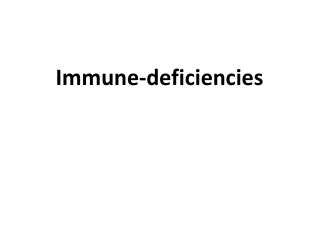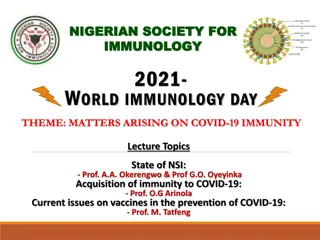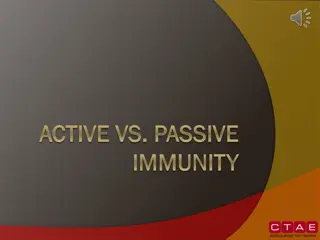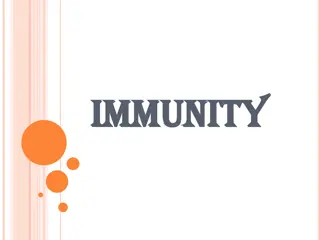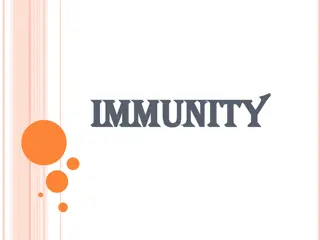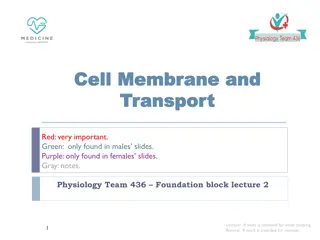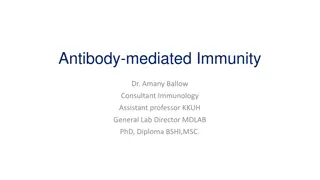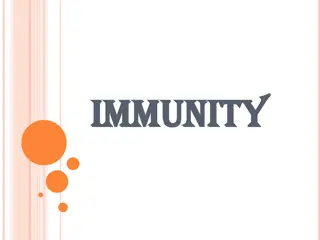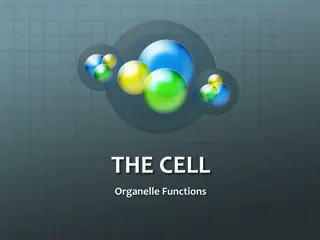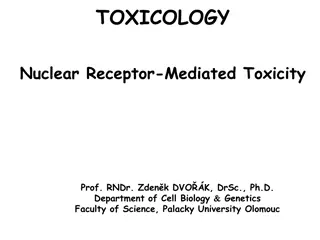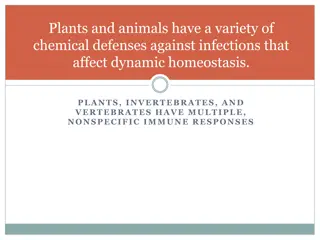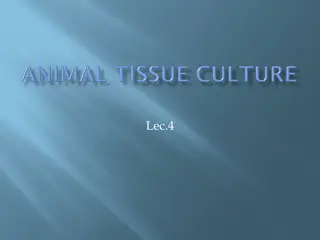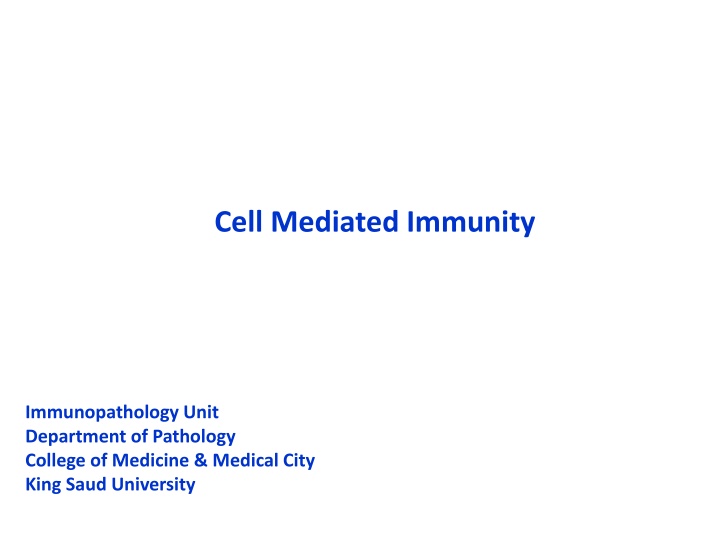
Cell-Mediated Immunity
Explore the intricate mechanisms of cell-mediated immunity (CMI) and the role of antigen-presenting cells in activating T lymphocytes to trigger immune responses. Learn about major histocompatibility complex (MHC) proteins and their significance in tissue transplantation success.
Download Presentation

Please find below an Image/Link to download the presentation.
The content on the website is provided AS IS for your information and personal use only. It may not be sold, licensed, or shared on other websites without obtaining consent from the author. If you encounter any issues during the download, it is possible that the publisher has removed the file from their server.
You are allowed to download the files provided on this website for personal or commercial use, subject to the condition that they are used lawfully. All files are the property of their respective owners.
The content on the website is provided AS IS for your information and personal use only. It may not be sold, licensed, or shared on other websites without obtaining consent from the author.
E N D
Presentation Transcript
Cell Mediated Immunity Immunopathology Unit Department of Pathology College of Medicine & Medical City King Saud University
Reference Kuby Immunology 8th Edition Chapter 8 Chapter 11
Objectives To describe antigen recognition by T cells To describe the pathways involved in processing endogenous and exogenous antigens To discuss self MHC restriction in Ag presentation to T cells To describe the induction of cell meditated immunity (Chronic Inflammation)
Cell Mediated Immunity (CMI) T cells (lymphocytes) via their receptors bind to the surface of other cells (Antigen Presenting Cells) that display the processed antigen and trigger a response Mononuclear cell inflammatory process usually associated with chronic inflammations
Antigen Presenting cells Monocytes : Peripheral blood Monocytes : Peripheral blood Macrophages : Tissues Macrophages : Tissues Dendritic cells : Lymphoid Dendritic cells : Lymphoid tissues ( (Langerhans cells Langerhans cells) ) tissues, skin , skin B B- -cells : Lymphoid tissue, Blood cells : Lymphoid tissue, Blood
Lymphocyte Macrophage Lymphocyte
Cell Cell- -Mediated Immunity (CMI) Mediated Immunity (CMI) T T- -lymphocytes lymphocytes Antigen Antigen+MHC (Major (Major Histocompatibility Histocompatibility Complex) Complex) +MHC Immune responses Immune responses
Major Major Histocompatibility Histocompatibility Complex (MHC) (MHC) Complex Major histocompatibility complex (MHC) proteins were discovered for the first time when tissue transplantation started The success of tissue and organ transplantation depends upon the match of donor s and recipient s human leukocyte antigens (HLA) encoded by HLA genes Genes for HLA proteins are clustered in the MHC complex located on the short arm of chromosome 6
MHC Each individual has two haplotypes ie, two sets of these genes one paternal and one maternal MHC Class I molecules are found on the surface of virtually all nucleated cells MHC Class II molecules are normally present of the surface of antigen presenting cells such as: Marophages, Dendritic cells B cells
Biologic Importance of MHC Antigen recognition T cytotoxic (CD8) cells kill virus infected cells in association with class I MHC proteins T helper (CD4) cells recognize antigen in association with class II MHC proteins This is called MHC restriction This is called MHC restriction Transplantation Success of organ transplant is determined by compatibility of the MHC genes
1. Endogenous antigen (Cytoplasm) 2. Exogenous antigen (Membrane Bound)
Virus Target cell
Target cell Host cell Transcription Translation Viral protein
Exogenous antigen Microbes Proteins Cell Cell- -mediated immunity mediated immunity
Exogenous antigen CD4+ T-lymphocytes (CD4+ cells) Class II MHC APC APC CMI (Cell Mediated Immunity) Antigen presenting cells Monocytes/Macrophages Dendritic cells Langerhans cells B-cells
Antigen Presenting Cells Dendritic cells and macrophages digest invading microbe and then present the antigen of the microbe to lymphocytes in lymphoid organs.
endogenous Antigen exogenous Antigen processing Antigen Presenting Cell
Two signals are required of activation of T cells Two signals are required to activate T cells First signal Class II MHC + antigen TCR IL-1, LFA-1 with ICAM Second signal (Costimulatory signal) B7 on APC interacts with CD28 on lymphocyte
V TcR HLA-DR Ag CD3 V CD4 auxillary LFA-3 CD2 LFA-1 molecules ICAM-1 CD80/86(B7) CD28 Trimolecular complex
T lymphocytes T lymphocytes ("T cells"): CMI Subsets include: CD4+ helper T cells enhance CMI and production of antibodies by B cells CD8+ cytotoxic T lymphocytes (CTLs) that kill virus-infected and tumor cells NKT cells, and NK cells can also eliminate infected cells and abnormal tumor cells
Out come of T helper cell activation Out come of T helper cell activation Production of IL-2 and its receptor IL-2 is also know as T cell growth factor Proliferation of antigen specific T cells Effector and regulatory cells are produced along with memory cells IL-2 also stimulates CD8 cytotoxic cells Production of Interferons Enhances anti-microbial activity of macrophages
Granuloma Formation (Chronic Inflammation, e.g., TB)
Out come of T helper cell activation Out come of T helper cell activation Memory T cells Respond rapidly for many years after initial exposure to antigen A large number of memory cells are produced so that the secondary response is greater than the primary Memory cells live for many years and have the capacity to multiply They are activated by smaller amount of antigen They produce greater amounts of interleukins
Examples of Cell Mediated Immunity 1. Delayed type of hypersensitivity (DTH) reaction: the tuberculin test Mediated by CD4+ T cells and takes about 72 hours to develop 2. Contact hpersensitivity Many people develop rashes on their skin following contact with certain chemicals such as nickel, certain dyes, and poison ivy plant The response takes some 24 hours to occur and like DTH, is triggered by CD4+ T cells
Necklace Rash Contact Dermatitis
Take Home Message Cell mediated adaptive immune response is specific and develops after exposure to a pathogen (antigen) Initial antigen exposure results in generation of memory cells for a stronger and a quicker response against future exposures to the same pathogen It is usually associated with chronic infections Antibodies are not involved

